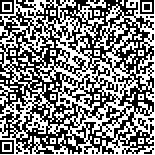| 成晓芬,闵淑慧,郭芮绮,等.1990—2019年中国胃癌发病与死亡率年龄-时期-队列分析及2020—2030年变化趋势预测[J].中国肿瘤,2023,32(6):454-461. |
| 1990—2019年中国胃癌发病与死亡率年龄-时期-队列分析及2020—2030年变化趋势预测 |
| Analysis on Age-Period-Cohort Model of Incidence and Mortality of Gastric Cancer in China from 1990 to 2019 and Trend Prediction from 2020 to 2030 |
| 投稿时间:2022-11-19 |
| DOI:10.11735/j.issn.1004-0242.2023.06.A008 |
|
 |
| 中文关键词: 胃癌 发病率 死亡率 趋势分析 年龄-时期-队列模型 灰色预测模型 中国 |
| 英文关键词:gastric cancer incidence mortality trend analysis age-period-cohort model gray prediction model China |
| 基金项目:广东省高校哲学社科重点实验室(2015WSYS0010);广州市人文社会科学重点研究基地(2021—2023年) |
|
| 摘要点击次数: 941 |
| 全文下载次数: 352 |
| 中文摘要: |
| 摘 要:[目的] 分析1990—2019年中国胃癌发病率和死亡率的变化趋势,估计其年龄、时期和队列效应,并对其2020—2030年的发展趋势进行预测。[方法] 利用全球疾病负担研究的数据,通过Joinpoint模型和t检验分析1990—2019年胃癌发病率和死亡率的变化趋势及性别差异。采用年龄-时期-队列模型分析1990—2019年胃癌发病率和死亡率的年龄、时期和队列效应。应用灰色预测模型预测2020—2030年中国胃癌的发病率和死亡率。[结果] 1990—2019年,中国胃癌的粗发病率(AAPC=1.65%,P<0.01)和粗死亡率(AAPC=0.48%,P<0.01)呈上升趋势,标化发病率(AAPC=-0.70%,P<0.01)和标化死亡率(AAPC=-1.90%,P<0.01)呈下降趋势。胃癌的粗发病率(t=30.76,P<0.01)、标化发病率(t=13.18,P<0.01)、粗死亡率(t=18.46,P<0.01)和标化死亡率(t=19.71,P<0.01)均具有性别差异。年龄-时期-队列模型分析结果显示,男、女性胃癌发病率的净漂移分别为0.33(95%CI:0.08~0.58)、-1.87(95%CI:-2.12~-1.62),男、女性胃癌死亡率的净漂移分别为-1.63(95%CI:-1.95~-1.32)、-3.36(95%CI:-3.69~-3.03);年龄、时期和队列效应均是影响男、女性胃癌发病率和死亡率的关键因素。灰色预测模型结果显示,2020—2030年中国胃癌的标化发病率和标化死亡率均呈下降趋势。[结论] 我国胃癌发病率和死亡率呈现下降趋势,但仍处于世界较高水平,且存在性别差异的问题,未来需要进一步实施精准性防控策略。 |
| 英文摘要: |
| Abstract:[Purpose] To perform age, period and cohort analysis of incidence and mortality of gastric cancer in China from 1990 to 2019 and to predict the trend from 2020 to 2030. [Methods] The trends and gender differences in gastric cancer incidence and mortality from 1990 to 2019 were analyzed based on data from Global Burden of Disease with Joinpoint model and t test. The effects of age, period and cohort on gastric cancer incidence and mortality from 1990 to 2019 were analyzed. A gray prediction model was applied to predict the incidence and mortality of gastric cancer in China from 2020 to 2030. [Results] From 1990 to 2019, the crude incidence rate(AAPC=1.65%, P<0.01) and crude mortality rate(AAPC=0.48%, P<0.01) of gastric cancer in China showed an increasing trend; the age-standardized incidence rate(AAPC=-0.70%, P<0.01) and age-standardized mortality rate(AAPC=-1.90%, P<0.01) showed a decreasing trend. There were gender differences in crude incidence(t=30.76, P<0.01), age-standardized incidence(t=13.18, P<0.01), crude mortality(t=18.46, P<0.01) and age-standardized mortality(t=19.71, P<0.01) of gastric cancer. The results of the age-period-cohort model showed that the net drift of gastric cancer incidence was 0.33(95%CI:0.08~0.58) and -1.87(95%CI:-2.12~-1.62) for male and female, respectively;and the net drift of gastric cancer mortality was -1.63(95%CI:-1.95~-1.32) and -3.36(95%CI:-3.69~-3.03), respectively; age, period and cohort effects were all key factors influencing the incidence and mortality of gastric cancer in both male and female. The results of the gray prediction model showed that the age-standardized incidence rate and age-standardized mortality rate of gastric cancer in China showed a decreasing trend from 2020 to 2030. [Conclusion] The study indicates that the incidence and mortality rates of gastric cancer in China showed a decreasing trend; but still at a high level in the world and there is also a problem of gender differences, which requires further strengthening the prevention and control measures for gastric cancer in China. |
|
在线阅读
查看全文 查看/发表评论 下载PDF阅读器 |